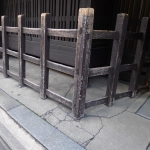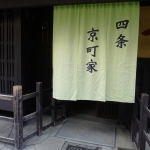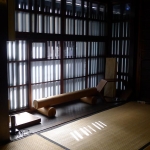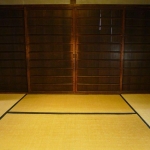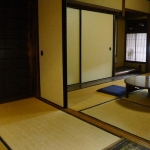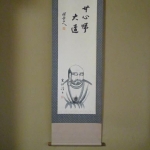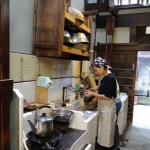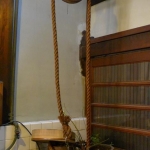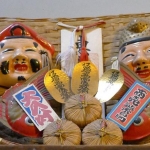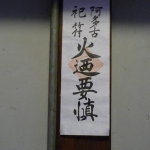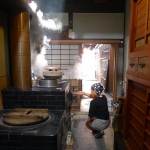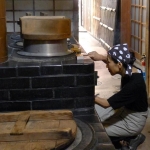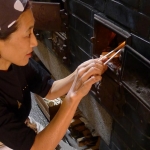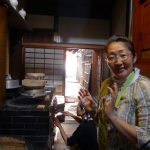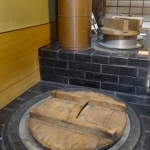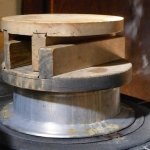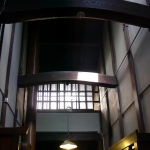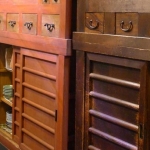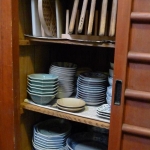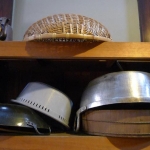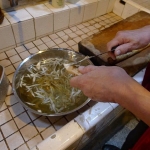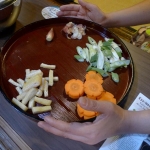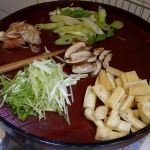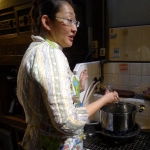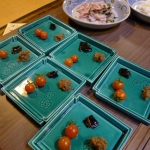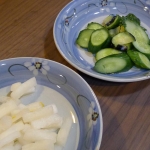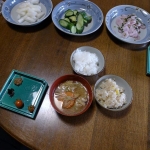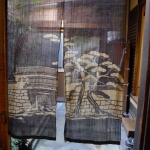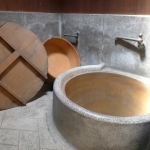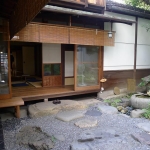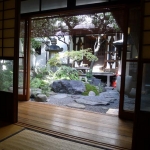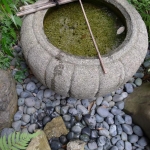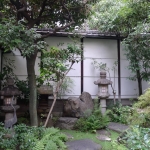Cooking – Kyo Machiya
I was fortunate to have the opportunity to observe Japanese rice being cooked using an “Okudosan,” a traditional firewood kitchen range. This experience was offered by Ayuko Yamaguchi of Deepest Kyoto Tours.
“Kudo” is the Kyoto word for the traditional, pre-20th century kitchen hearth (called kama in standard Japanese). “O” and “san” are both honorifics. People have many words that use the “san” suffix, which is usually used to refer to a person in a polite way: as in Tanaka-san (Mr./Mrs./Ms. Tanaka).
Okudosan refers to the area where house wives prepared meals with big pots over the hearth (often built of thick clay with holes for the pots).
To protect the home from fire, a special paper talisman from Atago Shrine (home of the deity of fire: on Mount Atago or Atago-san on the west side of Kyoto) was placed near the oven. The largest hearths had three iron pots: one for boiling water, one for cooking rice, and one for side dishes. You can still see these practical, built-to-last hearths in many old machiya townhouses.
Usually there is a shelf above the okudosan where the lucky god Hotei stands (7 in a row are especially lucky). The chubby, cheerful god is a symbol of good business and thousands visit Kyoto’s Fushimi Inari Shrine every year in February to get a new Hotei clay statue. This okudosan has Daitokuji and Ebisu to watch over the proceedings.
Shijo Kyomachiya, one of the last remaining machiya in this area, is the setting for this memorable experience.
For information go to this website: http://deepestkyototour.com/


